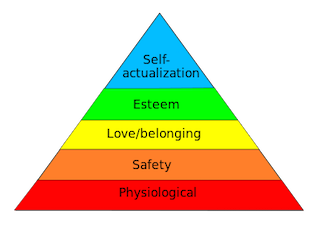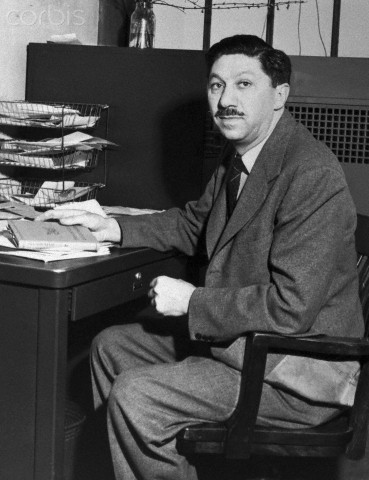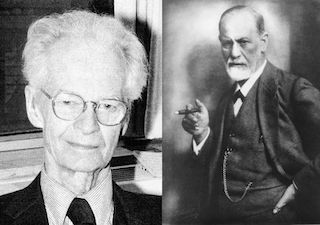Part One, Entrepreneurship and Maslow's Hierarchy
Understanding what motivates people's decisions and how people can find success is one of the keys to building a successful community.
In 1947, a brilliant psychologist named Abraham Maslow built on the work of his predecessors to create a chart of hierarchies, known as Maslow's hierarchy of needs (read more here), where he succinctly illustrated the needs of every human being.
Maslow's chart (source).
At first glance, the chart is simplistic. In fact, most of us came across it in high school and probably forgot about it until now. But is a powerful analytical tool for understanding how an individual must fulfill his or her basic needs before developing and fulfilling more advanced ones.
A Humanist thinker, Maslow set out to understand what makes us prioritize certain needs over others and then behave accordingly. The chart goes from the most basic needs, to more advanced ones, until it finally reaches its pinnacle: self actualization, when humans reach their full potential (see video: here).
When you consider, for instance, how your needs might change over time, you can begin to see exactly what Maslow was getting at with his hierarchy. As a baby, your first needs are very basic and you use your only communication tools to persuade your parents to feed you, change your diaper, etc. As a small child, you might be more concerned that your parents or other adults stay near you to keep you safe, and if those needs are met, you will become more concerned with social needs for love and friendship within your community.
Maslow theorized his chart over 50 years ago, but it remains widely used (source).
Maslow's ultimate level--the need for self-actualization or for reaching one's potential, may or may not develop as part of an individual's life. To take another example, let's say a woman has basic, safety, love, respect needs fulfilled and is working to understand her own full potential and improve and refine her life in order to reach it. However, she learns that her company is going bankrupt and she will soon lose her job--and with it, all of her investments. What happens? Does she continue to explore and develop herself towards actualization? Of course not. She must move back down the chart in order to fulfill some of her more fundamental needs.
Maslow during an interview where he discusses Self Actualization (see more here)
But what really interests me is how--by understanding individual development and motivation through this chart--we can see and help individuals develop towards self actualization. Working with dispossessed youth in the agonies of poverty, I have seen so many young people with huge potential that cannot get past the circumstances which prevent them from fulfilling their most basic needs. Young people are fighting to fulfill their economic needs--sometimes basic needs like food and shelter, and other times need for security and economic stability.
Maslow's Humanistic work was in retaliation to the limitations of the theories of Freud and Skinner (source).
When kids are working within that paradigm, they are very unlikely to develop goals for self-actualization, etc. And this firsthand knowledge has led me to see his hierarchy as one of our most important analytical tools.
Why is it so important? Simply put: understanding someone's behavior and development is all it takes to tailor support to them. Abraham's chart helps us determine the origin of antisocial behavior and target support towards fulfilling that need. Even more importantly, underscoring the significance of education (and I would argue: entrepreneurship education), the view is enhanced to see how people can go from the bottom of the chart to the top in self actualization. By adding an additional point to the chart, we see how education is an important check-point or benchmark in an individual's quest to lead a better life.
In Part Two of this article, which will be published Friday, I will discuss another famous chart and how it can help an individual not only reach Maslow's self actualization, but do so through entrepreneurial success.
Read Part Two of this piece here.



